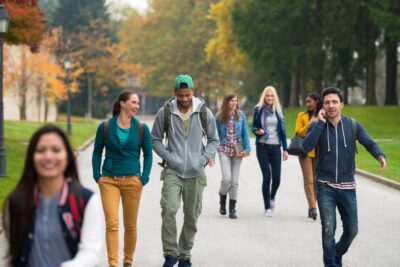Who could benefit the most from more academic advising?
Many colleges and universities are expanding advising and student support to improve retention and graduation rates. This makes sense. Recent studies have established that students are more likely to succeed when they meet with advisors. There are ample examples of institutions that have seen retention rates rise after increasing the scope or intensity of advising efforts.
We have been encouraged to see these results, but they naturally lead to more questions. How much of a lift does advising give students? Does this pattern hold at all schools? Which student populations derive the most benefit? How can institutions increase advising touchpoints even when budgets are more unpredictable than ever?
The answers to these questions can help us design and deploy more equitable advising strategies for connecting students to support and help us understand how to use technology to deepen the impact that advisors can have with students—even when meeting virtually.
Our data science team has been studying how advising interactions might inflect student outcomes by analyzing data from over two dozen partner institutions in the Student Success Collaborative. We wanted to share some of their early findings.
About the analysis
EAB’s Student Success Predictive Model (SSPM) uses historical data to forecast the likelihood that a student or group of students persists and graduates. This allows our team to look back at past terms and compare the model’s predictions to what actually happened in order to estimate the impact of interventions such as advising. For this analysis, we subdivided students by class year (first-year through senior) and by their predicted likelihood to persist relative to others at their institution (high, medium, or low) in order to study the effect of advising on different students. We then played the tape forward and looked at how students performed relative to their forecasts if they met with an advisor at least once in a given term.
Finding 1: Advising is positively correlated with persistence
We found a positive correlation between advising and persistence across the vast majority of our study institutions and cohorts. For example, first-year students were retained at a rate three to six percentage points higher than expectations when meeting with an advisor. We saw similar gains for sophomores. Additionally, we saw consistently positive correlations regardless of how the appointment originated (i.e., whether the appointments arose because they were mandatory for a group, advisor-initiated, or student-initiated).
Finding 2: Students with the lowest likelihood to persist benefited the most
This positive correlation was especially notable for students with the lowest predicted likelihood of persistence. We found a lift between five and eight percentage points for students with lower baseline likelihood of persistence. Interestingly, this benefit remained consistently high even for juniors and seniors, even as students with higher likelihoods of persistence saw smaller gains.

Post facto analyses like this cannot definitively establish a causal relationship, and there is a chance we are detecting a correlation rather than a real signal. That said, we have two reasons to be confident that our findings represent a reliable and reproducible trend. First, we grouped students according to their forecasted likelihood to persist thereby controlling for differences in advising intensities related to model inputs such as grades, credit progress, and demographics. Second, the overperformance of appointment-attendees was almost universal across a diverse sampling of students and schools, suggesting a universal relationship.
How you can expand advising interactions
Our analysis makes a strong case that students who meet with advisors are more likely to persist to the next term. More notably, students with the lowest predicted likelihoods to persist benefit from advising engagements the most. This is incredibly encouraging news for institutions trying to close their equity gaps in retention and completion, as it points to how advising may be able to support these efforts.
So, how can institutions increase student engagement with advising? Traditionally, this has meant hiring more advisors, and while we have evidence to suggest that advisors more than pay for themselves in terms of the tuition revenue they preserve, we know that investments in new staff may be difficult to justify in a resource-constrained environment.
The pandemic has generated impressive innovations in how advising and student support teams connect with students using video conferencing and other communication technologies. The result was a major uptick in the number of advising appointments when schools went virtual in Spring 2020. Advisors also reported that virtual appointments made it easier to meet with students who have competing priorities, such as jobs and family, that might have kept them from attending in-person appointments.
Self-service technologies, such as academic planners and mobile apps, are yet another way schools increase student interaction with advisors without additional investment in personnel. These tools have the two-fold benefit of establishing an ongoing connection between students and advisors.
Our results strongly suggest that institutions seeking to improve persistence and graduation rates should actively engage students with advising. Schools can feel confident that new advising investments will pay off, especially for students who need the most support.
Build a coordinated care network to support your students.
Learn more below.


More Blogs

3 ways to combat the student loneliness epidemic on your community college campus

3 hidden retention challenges facing higher ed in 2025
